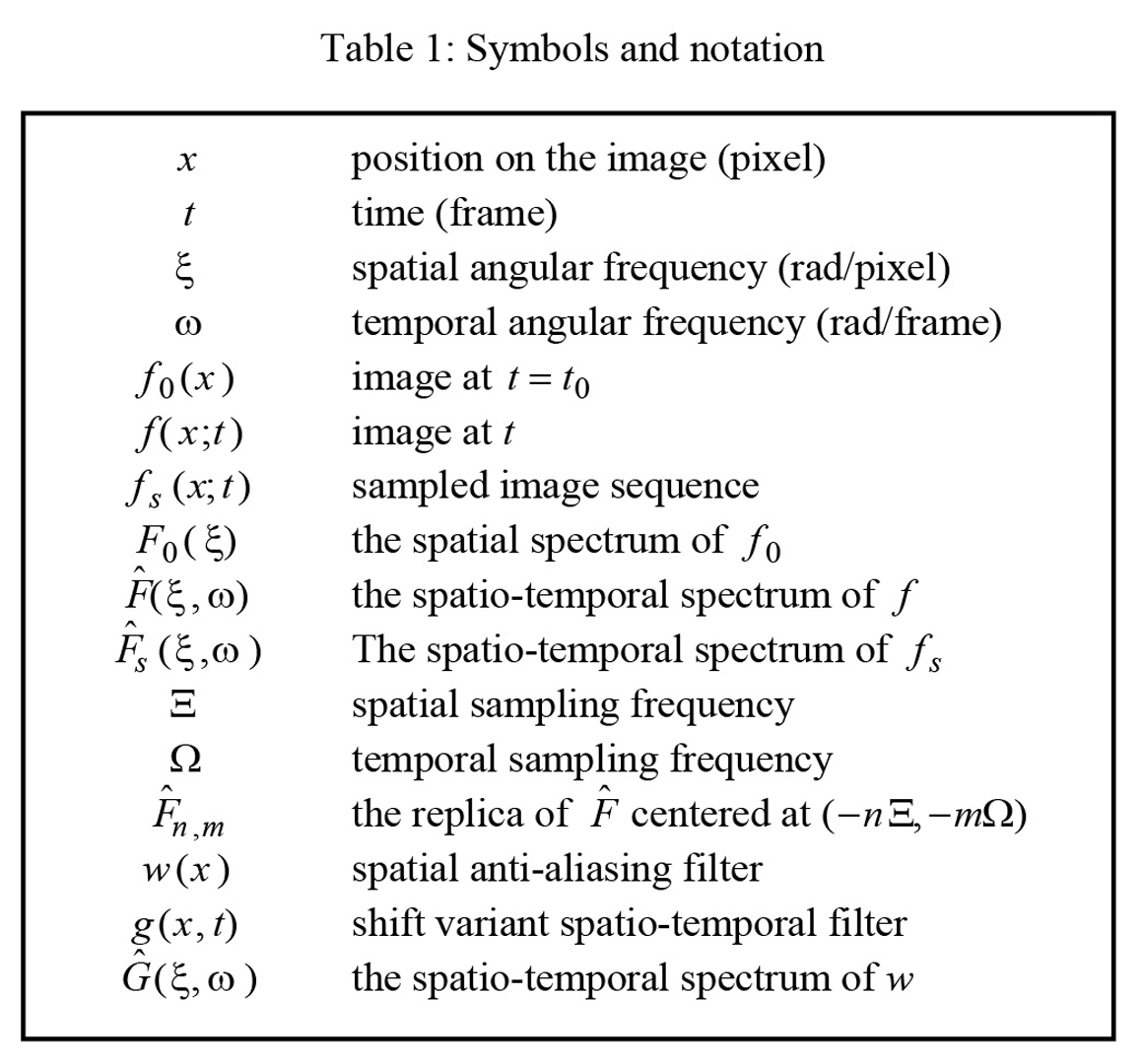“Spatial anti-aliasing for animation sequences with spatio-temporal filtering” by Shinya
Conference:
Type(s):
Title:
- Spatial anti-aliasing for animation sequences with spatio-temporal filtering
Presenter(s)/Author(s):
Abstract:
Anti-aliasing is generally an expensive process because it requires
super-sampling or sophisticated rendering. This paper presents a
new type of anti-aliasing filter for animation sequences, the pixeltracing filter, that does not require any additional sample nor additional calculation in the rendering phase. The filter uses animation
information to calculate correlation among the images, and sub-pixel
information is extracted from the sequence based on the correlation.
Theoretical studies prove that the filter becomes an ideal antialiasing filter when the filter size is infinite.
The algorithm is simple image processing implemented as postfiltering. The computational cost is independent of the complexity of
the scene. Experiments demonstrate the efficiency of the filter.
Almost complete anti-aliasing was achieved at the rate of about 30
seconds per frame for very complex scenes at a resolution of
256×256 pixels. The pixel tracing filter provides effective antialiasing for animation sequences at a very modest computational
cost
References:
1. Loren Carpenter, ‘The A-buffer, An Antialiased Hidden Surface Method,’ Computer Graphics 18, No.3, pp.103- 108, 1984.
2. Edwin Catmull, ‘An Analytic Visible Surface Algorithm for Independent Pixel Processing,’ Computer Graphics 18, No.3, pp.109-115, 1984.
3. R. L. Cook, T. Porter, L. Carpenter, ‘Distributed Ray Tracing,’ Computer Graphics 18, No.3, pp.137-145, 1984.
4. R. L. Cook, ‘Stochastic Sampling in Computer Graphics,’ACM Trans. Graphics, 5, No.l, pp.51-57, 1986.
5. M. A. Dipp6, ‘Anti-aliasing through Stochastic Sampling,’ Computer Graphics 19, No.3, pp.69-78, 1985.
6. James D. Foley, Andies van Dam, Steven K. Feiner, John F. Hughes, ‘Computer Graphics Principal and Practice,’ Addison-Wesley, 1990.
7. Charles W. Grant, ‘Integrated Analytic Spatial and Temporal Anti-Aliasing for Polyhedra in 4-Space,’ Computer Graphics 19, No.3, pp.79-84, 1985.
8. P. Haeberli, K. Akeley, ‘The Accumulation Buffer: Hardware Support for High-Quality Rendering,’ Computer Graphics, 24, No.4, pp.309-318, 1990.
9. P. S. Heckbert, P. Hanrahan, ‘Beam Tracing Polygonal Objects,’ Computer Graphics, 18, No.3, pp.119-128, 1984.
10. Mark E. Lee, Richard A. Redner, and Samuel P. Uselton, ‘Statistically Optimized Sampling for Distributed Ray Tracing,’ Computer Graphics 19, No.3, pp.61-67, 1985.
11. D. Mitchell, ‘Spectrally Optimal Sampling for Distributed Ray Tracing,’ Computer Graphics 25, No.4, pp.157- 164, 1991.
12. A. N. Netravali and B. G. Haskell, ‘Digital Pictures – Representation and Compression,’ Prenum Press, 1988.
13. Takafumi Saito and Toki Takahashi, ‘Comprehensible Rendering of 3-D Shapes,’ Computer Graphics 24, No.4, pp. 197- 206, 1990.
14. M. Shinya, T. Takahashi, and S. Naito, ‘Principles and Applications of Pencil Tracing,’ Computer Graphics,21, No.4, pp. 45-54, 1987.




